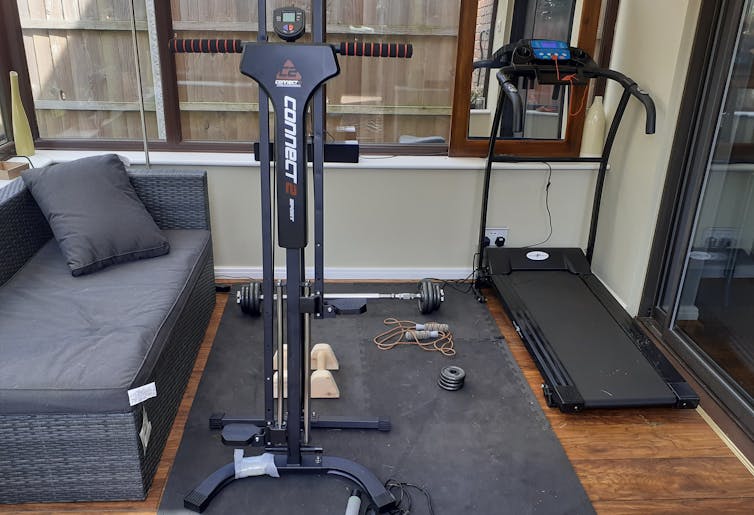Even prior to COVID-19 pandemic, our research revealed that 83% of parents were concerned about the amount of time their children spent in front of a screen or monitor. Recent events have made this even more of an issue.
Every hour of TV viewed after the age of 25 reduces the viewer’s life expectancy by 21.8 minutes – and the pandemic has made it particularly difficult to encourage children, particularly teenagers, to switch off devices and exercise away from their friends.
Exercise is a key way to improve health and levels of well-being. According to the World Heath Organization (WHO), “a short break from sitting, by doing 3-5 minutes of physical movement, such as walking or stretching, will help ease muscle strain, relieve mental tension and improve blood circulation and muscle activity”. Those aged five to 17, however, should spend at least 60 minutes a day doing moderate to vigorous physical activity.
So what should we do to help our children become more physically active during the pandemic?
Prior to the pandemic, our research revealed that 33% of children spent six or more hours in front of the screen every day, and that 67% of parents reported that their children failed to meet the recommended levels of physical activity.
Read more: Digital homeschooling: we need to rethink our worries about children’s screen time
The damage we’re doing to our children and ourselves
Children should spend more time barefoot to encourage a healthier foot structure
Nearly 80% of parents also struggled to limit their children to the recommended two hours of screen time a day. This was often down to resistance from their children, particularly when the children used a lot of social media or spent time video gaming with friends.
The pandemic effects on children’s screen time
With many children still unable to attend school and freely meet with friends, the pandemic has made this even more challenging. Indeed, our recent unpublished online survey indicated that parents are more concerned than ever about their children’s activities.
Online lessons and schoolwork have of course contributed to an increase in the amount of time children spend in front of screens – and this is largely unavoidable. But 82% of parents said that their children’s screen time has increased during lockdown, and 30% said that their children were having an extra four hours or more of non-school related screen time per day.
Read more: Cycling to watch TV … and other clever ways to beat obesity from the comfort of your own home
Lockdown: how to stay fit at home
Snacking: the modern habit that could be putting your health and waistline at risk
Under normal conditions, children benefit from a degree of everyday physical activity. They walk to and from school. They play with their friends in the park. They go to the shops. But this basic level of exercise has also been affected by lockdown measures and school closures.
This has put a huge burden on parents to make up for this shortfall, but they are also struggling to set a good example for the same reasons. Research has shown that children learn from and are influenced by what’s going on around them. So, when parents struggle to be active, children may follow suit.
Parental support is key. But it is hard to control children’s screen time at the best of times, and particularly so when we’re all spending more time at home.

We have been conducting research to help mitigate this – and one of our earlier models may help. In this, we suggest using exercise as a way to earn points which can be used to “buy” screen time. Indeed, our research suggests that goal setting is a key strategy and that parents can use several tactics to do this.
First, develop a diagram – such as a chart on their bedroom wall – to help track children’s screen time. This helps children to visualise the amount of time they are spending in front of screens and to manage and set goals for their screen use.
Second, use positive cues, such as the points system mentioned earlier, to encourage more exercise rather than penalising children for using screens too much.
Third, be a good role model to encourage your children to reduce their own sedentary behaviour. You can change your home environment to encourage a more active, and less sedentary, lifestyle by devoting space to a home gym or workout area, for example, and limiting screens to dedicated areas.
Think differently
Perhaps the pandemic is an opportunity for us all to rethink how we spend our time at home – and the role screens play within them. At home, screens can provide an effective communication channel with the outside world. But our homes are also a place to manage our health, and take care of our collective well-being as a family. It is important to manage this balance and to consider changing the home environment accordingly.
One of us has a teenage boy at home, and it is difficult to convince him to stay away from screens – where he meets his friends online – and to be more physically active instead. Instead, with visits from guests at a minimum, some of the usual social space at home has been transformed into a makeshift gym (see photo above). NHS exercise videos are also helpful for families looking to stay physically active.
Now, of course, more time can be spent outside. But habits developed during lockdown will have to be addressed. It is more important than ever for families to develop new routines for staying physically and mentally healthy – and to address the part screens play in our lives.
Hyunjae Daniel Shin, Senior Lecturer in Product Design, College of Art & Design and Built Environment, Nottingham Trent University and Amin Al-Habaibeh, Professor of Intelligent Engineering Systems, Nottingham Trent University
This article is republished from The Conversation under a Creative Commons license. Read the original article.

